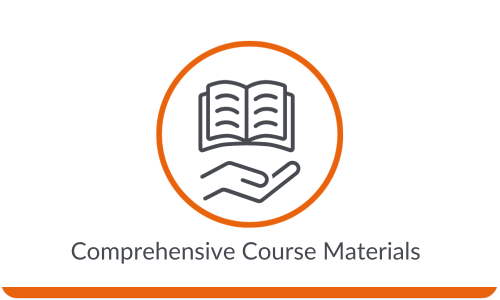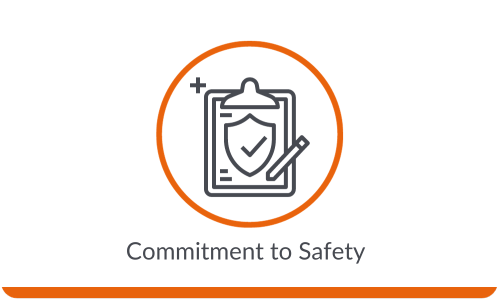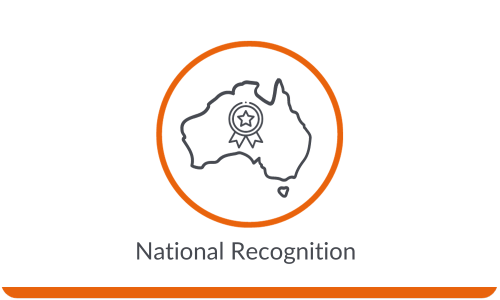Childcare First Aid Training
REQUEST A GROUP TRAINING QUOTE NOW!
Overview | Childcare First Aid Training
Elevate your team’s capabilities in Childcare First Aid with our specialised Childcare First Aid Training, meticulously crafted for childcare settings. This on-site training is perfect for various childcare environments, tailored to meet the distinct safety requirements of your centre, ensuring that the training is both relevant and directly advantageous for your team’s first aid responsibilities.
Conducted within your own childcare setting, our Childcare First Aid Training offers an engaging and hands-on learning experience. We focus on scenarios that mirror the conditions of your childcare environment, making sure the skills imparted are not only effective but also immediately applicable to first aid situations.
Our Childcare First Aid Training course is specifically designed to meet the challenges in childcare settings. It sharpens crucial skills such as rapid decision-making, efficient problem-solving, and maintaining calm in emergencies. Essential for childcare professionals, this training ensures readiness for diverse first aid situations, fostering a vigilant and supportive team atmosphere. Each member is empowered to deliver prompt, effective first aid to children, enhancing safety and care in your childcare environment.
Our training is designed to fit with your organisation’s timetable, minimising disruption to your daily operations. The program delves beyond basic first aid techniques, concentrating on building confidence in emergency scenarios, increased awareness of childcare-specific risks, and readiness for first aid emergencies, equipping team members to adeptly handle health-related crises in children.
Opt for our Childcare First Aid Training for a practical and effective strategy to boost your team’s first aid skills in a childcare context. It’s a smart choice for fostering a safer, more skilled first aid team in your childcare centre.
Customised Childcare First Aid Training for Various Industries
Our Childcare First Aid Training is specifically designed to cater to a variety of industries, ensuring that professionals across sectors are equipped with the skills necessary to handle child-related emergencies effectively.
- Childcare Centres and Daycare Facilities For these environments, our training is essential, focusing on the specific first aid needs and common emergencies encountered in caring for young children.
- Schools and Educational Institutions We tailor our training for educators, including teachers and school nurses, to manage emergencies effectively in primary and secondary school environments.
- Sports Clubs and Youth Organisations Our course for sports and youth organisations emphasises handling sports-related injuries and health issues that may arise in activities involving children.
- Healthcare Facilities In paediatric clinics and hospitals, our specialised first aid training equips healthcare staff with the skills necessary to treat children in medical emergencies.
- Hospitality Industry Hotels and resorts offering childcare services benefit from our training, ensuring their staff can confidently handle first aid situations in kids’ clubs and guest areas.
- Community Centres and Libraries We prepare staff in community centres and libraries for emergencies, focusing on the unique scenarios they may encounter with children in public spaces.
- After-school Programs and Camps Our training is vital for instructors and supervisors in after-school settings and camps, equipping them to ensure the safety of children in their care.
- Nanny Services and Babysitting Agencies We provide specialised first aid training for individuals in nanny and babysitting services, focusing on in-home childcare emergencies.
- Public Transport Services Our course prepares staff on school buses and other child-focused transport services to manage first aid situations effectively and safely.
- Entertainment and Theme Parks Employees in entertainment venues and theme parks receive training to handle the unique emergencies that may occur in areas frequented by families and children.
Each of these sectors demands a tailored approach to Childcare First Aid Training, and our courses are designed to meet these specific requirements, ensuring the highest standard of care and safety for children in various settings.
PROGRAM DETAILS
Students who are deemed competent will receive a Statement of Attainment, which is recognised under the Australian Qualifications Framework. This training is nationally recognised:
- HLTAID012 Provide First Aid in an Education and Care Setting
- HLTAID011 Provide First Aid
- HLTAID010 Provide Basic Emergency Life Support
- HLTAID009 Provide Cardiopulmonary Resuscitation
Intrinsic Safety Pty Ltd (RTO45803) is responsible under the National Vocational Education and Training Regulator Act 2011 for the quality of the training and assessment being delivered in this course and for the issuance of all AQF certificates.

Course Fees
- Group Bookings Only: Currently, we’re focusing on group training sessions. Individual course bookings are not available at this time.
Refunds & Fee Protection
- Your Guide to Policies: For detailed information on refunds and fee protection, please consult our Pre-Enrolment Participant Handbook.
Payment Information
- Group Bookings: Custom payment solutions for every team. We’ll work with you to set up terms that align with your needs and ours.
This course can be delivered/assessed in the workplace or at a facility organised by Intrinsic Safety Pty Ltd (RTO 45803).
Course Duration & Modes
- Face to Face Training: 8-hour intensive, hands-on session.
- Enhanced Online Training: Online pre-learning and assessment and 2-hour practical assessment session.
- Blended/Refresher Training: Mix of online pre-learning and 5-hour practical session, ideal for skill updates.
Each format is tailored to different learning styles and schedules, ensuring effective and efficient Childcare First Aid Training.
Our detailed course outline ensures a thorough grasp of:
Legal and Regulatory Framework
- Legal requirements for childcare first aid
- Education and care services national law requirements
- Education and Care Quality Authority (ACECQA)
- Incident reporting requirements
- Mandatory reporting
- Retaining records of any injury to a child
- Duty of care
- Good Samaritan laws
- Skill limitations
- Consent
- Legal aspects of consent
- Consequences of not obtaining consent
- Parental consent in the education and care sector
- Childcare First aid permission statement
Childcare First Aid Procedures and Practices
- Childcare First aid emergencies
- Recognising possible childcare first aid emergencies
- Safety priorities when responding to emergency
- Conducting a scene hazard assessment
- Identifying scene hazards
- Reducing risk of hazards on scene
- Infection control
- Standard precautions
- Chain of survival
- Cardiac arrest
- Cardiac arrest survival rates
- Primary survey
- Secondary survey
- S.A.M.P.L.E.
- Assessing level of consciousness (LOC)
- Using the AVPU scale
- Assessing breathing
- Indicators of respiratory status
- Recovery position
- Assessing vital signs
- Vital signs to monitor
- Normal range of vital signs
- Responding to changes in casualty’s condition
- Maintaining casualty comfort
- Ensuring child feels supported during treatment
Communication and Psychological Aspects
- Communicating with children in distress
- Distraction techniques for children/infants
- Confidentiality of casualty information
- Demonstrating respectful behaviours
- Psychological impact to childcare first aiders
- Critical incident debriefing
- Managing operational stress
- Children’s processing of critical incident information
- Mental health support services for first aiders
- Mental health support services for children
- Post-incident review
CPR and AED Use
- Cardiopulmonary resuscitation (CPR)
- High-quality CPR parameters
- Performing high-quality CPR
- Correct airway positioning when performing CPR
- Effect of positional change on upper airway
- Hand positioning for compressions
- Pit stop style of CPR
- Compressions-only CPR
- CPR induced consciousness
- When to cease CPR
- Automated External Defibrillator (AED)
- Shockable heart rhythms
- AED pad placement
- Automated External Defibrillator (AED) safety
- Using an AED on pregnant women
- Using an AED with oxygen therapy
- Using an AED around water
- Using an AED on children (paediatric mode)
- AED user maintenance and care
Specific Childcare First Aid Situations
- Allergic reaction
- Anaphylaxis
- Anaphylaxis action plan
- Asthma
- Asthma action plan
- Minor bleeding (non-life threatening)
- Major bleeding (life-threatening)
- Applying a tourniquet
- Applying a haemostatic dressing
- Life threatening internal bleeding
- Cardiac conditions
- Choking
- Stroke
- Diabetes
- Drowning
- Snake bite
- Spider bite (non-funnel web)
- Spider bite (funnel web)
- Tick, bee, wasp, and ant stings
- Tropical jellyfish stings
- Non-tropical jellyfish stings
- Blue ringed octopus and cone shell
- Fish stings
- Eye injury
- Fracture
- Splinting
- Applying a splint
- Dislocation
- Applying slings
- Strains/sprains
- Head injury (including concussion)
- Neck injury
- Spinal injury
- Hypothermia
- Hyperthermia
- Minor wounds
- Types of wounds
- Nosebleed
- Poisoning
- Seizures
- Shock
- Sharps injuries
- Breathing difficulties in children
- Thermal burns
- Rule of 9’s for estimating extent of burns
- Chemical burns
- Electrical burns
- Dehydration
- Febrile convulsions
- Fever
- Pain
- Vomiting
- Diarrhoea
- Acute illness in children and infants
Training and Preparedness
- Services providing childcare first aid advice
- First aid code of practice
- Safe work practices
- Training competency requirements
- Workplace first aid kits
- Workplace first aid kit contents
- M.R.M.I.S.T.
- Completing a first aid report form
- Bandages
- Bandaging guidelines
Assessment Methods
We provide a well-rounded assessment process that encompasses both practical tasks and scenarios, as well as written theory assessments, throughout the training. This comprehensive approach ensures a thorough evaluation of your skills and knowledge, allowing you to demonstrate your competency in real-world application and theoretical understanding.
Specific assessment tasks to be undertaken include:
- Knowledge Assessment
- Perform Adult CPR and AED – Practical
- Manage an Unconscious Breathing Casualty – Practical
- Perform Child CPR – Practical
- Perform Infant CPR – Practical
- Communicate Details of an Incident – Practical
- Review of the Incident – Practical
- Manage Asthma – Practical
- Manage Anaphylaxis – Practical
- Manage Non-Life-Threatening Bleed – Practical
- Manage a Choking Child – Practical
- Manage a Choking Infant – Practical
- Manage Shock – Practical
- Manage a Nosebleed – Practical
- Manage Fractures – Practical
- Manage a Snake Bite – Practical
- Manage Sprains and Strains – Practical
- Minor Wound Cleaning – Practical
- Manage Minor Dislocations – Practical
- Respond to a Childcare First Aid Incident – Practical
Entry Requirements
- Pre-Course Study: Depending on the course mode, online pre-course work may be required before the face-to-face session.
- Online Study Requirements: A computer, smartphone, tablet, or similar device with internet access is needed for online or pre-course studies.
For comprehensive details on your rights and responsibilities, including our complaints and appeals process, kindly refer to the Pre-Enrolment Participant Handbook on our website.
We’re committed to fostering an enriching learning environment. Key to this is understanding your Language, Literacy, Numeracy (LLN), and Digital Literacy skills, essential for your course success.
LLN Evaluation Verification
- Assessing Your Needs: Check if you need an LLN Evaluation based on your prior qualifications through our LLN Evaluation Verification Form.
Digital Literacy Checklist
- Embracing Technology: Complete our Pre-Enrolment Digital Literacy Checklist to help us tailor our support to enhance your digital skills.
Formal LLN Evaluation
- Tailored Support: If required, you can complete our Formal LLN Evaluation online, helping us understand your skill levels for personalised support.
These tools ensure you start your course with all the support you need for a successful learning journey. For any questions or extra assistance, feel free to contact our support team at [email protected].
REQUEST A GROUP TRAINING QUOTE NOW!
Pre-Enrolment Participant Handbook
Intrinsic Safety Pty Ltd (RTO 45803) offers a detailed pre-enrolment participant handbook for those interested in our programs. This handbook helps you understand your rights when you enrol with us.
We advise you to read and understand the handbook thoroughly before enrolling in any nationally accredited training program offered by Intrinsic Safety Pty Ltd. This ensures you are well-informed about the enrolment process and the program details.
If there is anything in the handbook where you require further clarification, please do not hesitate to call Intrinsic Safety on 1300 990 336 and one of our friendly team members will be more than happy to assist you.
LLN and Digital Literacy
You can complete these activities, using the links below now, or once you have enrolled:
- LLN Evaluation: It’s important for us to understand your language, literacy, and numeracy skills to best support your learning. Please complete the LLN Evaluation Verification, accessible HERE.
- Digital Literacy Checklist: To ensure you’re prepared for our digital learning environment, please fill out the Pre-Enrolment Digital Literacy Checklist available HERE.

Now is the time to get qualified.
discover our other training courses
Intrinsic Safety is an established, trusted, quality training provider with an extensive list of corporate clients and individuals who have attended our training courses over the years in a variety of learning areas:
REQUEST A CUSTOMISED QUOTE NOW!
Ready to start your training with Intrinsic Safety?
Enrol Now
Find and enrol in the course you need to complete today.
Call Us
Speak to one of our Training Specialists Monday – Friday from 7:30am – 5pm (AEST).
Submit an Enquiry
Not in a rush? Simply submit your enquiry and we look forward to speaking with you shortly.
Locate Us
Looking for our location details? We deliver courses throughout Australia.
Why Study with Us?






What people are saying

 Ash22 March 2024
Ash22 March 2024 Hamish Jones22 March 2024Good thorough training far better than other confined space training buisnesses
Hamish Jones22 March 2024Good thorough training far better than other confined space training buisnesses Jamie Dexter22 March 2024
Jamie Dexter22 March 2024 djari burton22 March 2024
djari burton22 March 2024 Dianne Ackley13 March 2024Brendan was a great instructor for this course. Very informative
Dianne Ackley13 March 2024Brendan was a great instructor for this course. Very informative Anthony13 March 2024Great course and delivery method very informative thanks brendan
Anthony13 March 2024Great course and delivery method very informative thanks brendan Rogers Chea13 March 2024Fantastic training and delivery method. Very informative and knowledgeable by our facilitator Brendan. I will definitely book with them again :)
Rogers Chea13 March 2024Fantastic training and delivery method. Very informative and knowledgeable by our facilitator Brendan. I will definitely book with them again :) Paul Swainson12 March 2024The course was really interesting and the delivery was great. Highly recommended
Paul Swainson12 March 2024The course was really interesting and the delivery was great. Highly recommended Damian Sturm8 March 2024Very thorough training course delivered by a knowledgeable and engaging individual!
Damian Sturm8 March 2024Very thorough training course delivered by a knowledgeable and engaging individual! shilo8 March 2024Very thorough and professional course!
shilo8 March 2024Very thorough and professional course!


